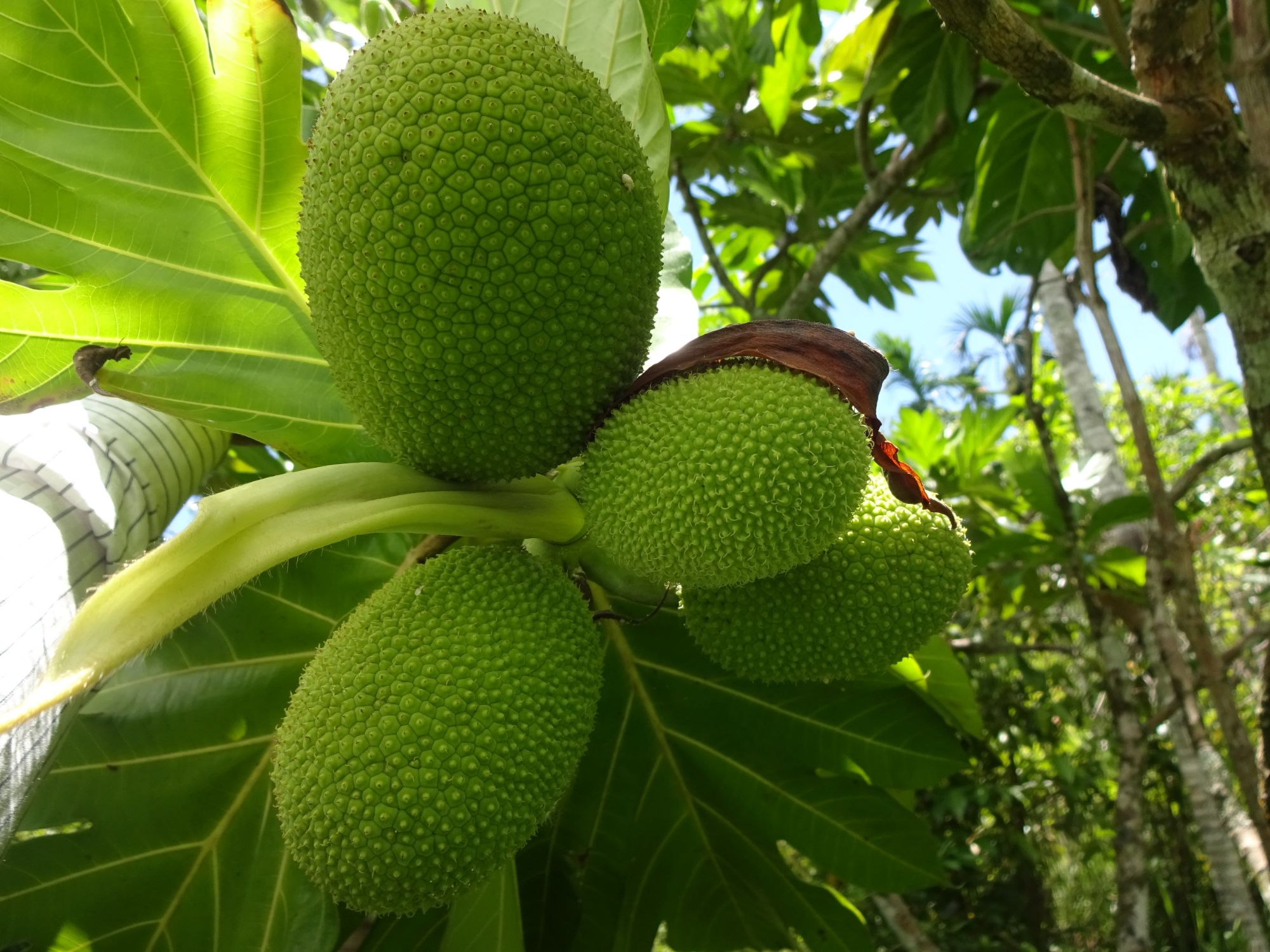Bread fruit – a versatile crop for Bay Islands

Bread fruit (Artocarpus altilis) and Breadnut (Artocarpus camansi) are important food crops in several island nations. The different types of these species yield starch rich fruits wherein the bread fruit trees bear seedless fruits and Bread nut trees bear seeded fruits. The fruits can be cooked and eaten at all stages of development. Immature fruits can be sliced and cooked as a vegetable. Matured breadfruit is widely used as boiled, steamed or baked for many recipes. Thinly sliced breadfruit leaving the core is also fried to make chips. Ripe fruits are creamy and sweet and can be eaten raw or used to make pies, cakes, and other desserts. The nutritious seeds in bread nut reported to resemble chestnuts in flavour and texture, and they are boiled, roasted, or ground into meal for consumption. All parts of the plant produce latex which is used for sealing joints and leaking pipes etc. Breadfruit is widely known as an energy-rich food and considered as a good source of carbohydrates, fibre, and minerals such as potassium, calcium, iron, magnesium, phosphorus, manganese, and zinc. The fruits can be sliced, dried, made into powder and stored for longer time. The flour from fruit which is categorized as gluten free and could be used for preparation of breads, roti, cakes, biscuits etc with or without addition of other flour.
Considering the potential of this crop in the Islands, ICAR-CIARI, Port Blair has located 11 accessions of these for further promotion. The trees commence flowering in about 4 to 5 years after planting. Yield assessment in 10- to 20-year-old trees revealed the average annual fruit yield per tree ranging from 150 to 250 fruits. The trees require lesser management practices, producing an abundance of food with lesser resources, and thrive under a range of island ecological conditions. Breadfruit can be used as an important component in plantation-based agroforestry systems in Islands and can be grown with a wide range of plants. They also give shelter and food to important plant pollinators and seed dispersers such as honeybees, birds, and fruit bats thereby aid to the natural farming of other crops in a harmonious way.
Benefit:The climate and soil in the whole of Andaman and Nicobar Islands is highly suitable for growing these trees. The tree has good potential to be promoted as future potential food crop in Andaman and Nicobar Islands as the presence of these trees would ensure food availability in remote places, possibly provide employment opportunities and reduce the dependency of transported food flour from far off places.
Source : Contact person with Name, Designation e-mail and phone no: Dr. B. Augustine Jerard, Principal Scientist, augustinejerard.b@icar.gov.in, 9447064463
